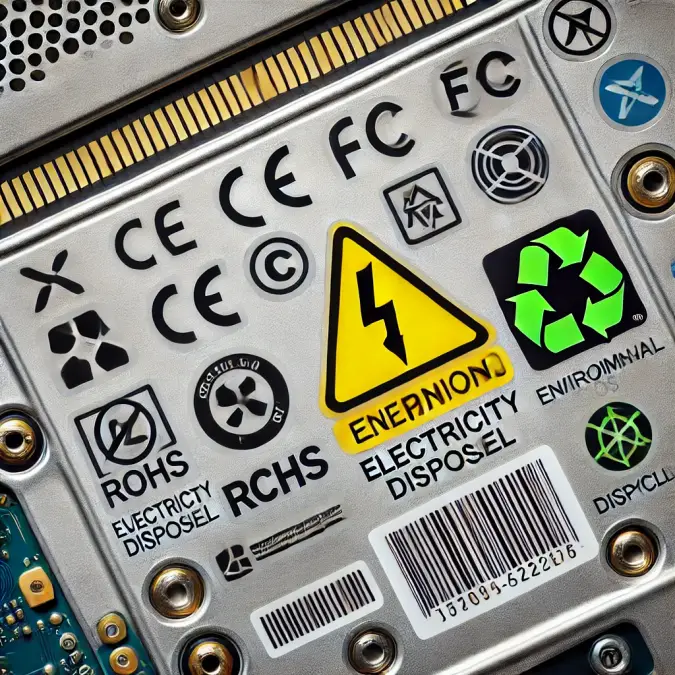
Stickers and Labels Guide for Electronic Devices: Everything You Need to Know
In the world of electronic devices, stickers and labels play a crucial role. They provide essential information, enhance branding, and ensure compliance with regulations. Whether you’re a manufacturer, retailer, or consumer, understanding the importance and proper use of these labels can make a significant difference. This guide will cover everything you need to know about stickers and labels for electronic devices.
1. Types of Stickers and Labels in Electronic Devices
a. Informational Labels
These labels provide critical information about the device, including serial numbers, model numbers, and specifications. They are essential for warranty purposes and technical support.
b. Compliance Labels
Compliance labels indicate that the device meets certain regulatory standards. Common examples include CE, FCC, and RoHS labels, which show adherence to safety, electromagnetic compatibility, and hazardous substance regulations, respectively.
c. Warning Labels
Warning labels are crucial for user safety. They highlight potential hazards, such as electric shock, high temperatures, or laser radiation. These labels are typically found on the device itself and in the user manual.
d. Branding Stickers
Branding stickers enhance the visual appeal and market identity of electronic devices. They often feature the company logo in the form of dome labels, brand name, and other marketing elements.
e. Security Labels
Security labels help prevent tampering and counterfeiting. They often feature holographic elements, QR codes, and other security features to ensure authenticity.
2. Materials Used for Stickers and Labels in Electronic Devices
a. Polyester (PET)
Polyester is a durable material resistant to chemicals, moisture, and extreme temperatures. It’s commonly used for compliance and informational labels.
b. Vinyl
Vinyl is flexible and resistant to outdoor conditions, making it ideal for branding stickers, specification labels, back stickers and warning labels that need to endure harsh environments.
c. Polycarbonate
Polycarbonate label is tough and resistant to impact and heat. It’s often used for labels that require a high degree of durability.
d. Paper
Paper labels are cost-effective and suitable for temporary uses, such as shipping labels or promotional stickers.
3. Printing Techniques for Stickers and Labels in Electronic Devices
a. Digital Printing
Digital printing is ideal for small to medium runs. It offers high-quality output and the flexibility to print variable data, such as serial numbers.
b. Flexographic Printing
Flexographic printing is suitable for large runs and can print on a variety of materials. It’s commonly used for compliance labels.
c. Screen Printing
Screen printing is known for its durability and vibrant colors. It’s often used for branding stickers and labels that require a high level of visibility.
4. Application Tips
a. Surface Preparation
Ensure the surface is clean and dry before applying any sticker or label. Use alcohol wipes to remove any dust, grease, or residue.
b. Alignment
Use alignment tools or templates to position the label correctly. This is especially important for informational and compliance labels that need to be easily readable.
c. Pressure
Apply even pressure across the label to ensure good adhesion. For large labels, use a squeegee to remove any air bubbles.
5. Regulatory Considerations for Stickers and Labels in Electronic Devices
a. RoHS (Restriction of Hazardous Substances)
RoHS compliance is mandatory for electronic devices sold in the European Union. Labels must indicate compliance with this directive.
b. WEEE (Waste Electrical and Electronic Equipment)
WEEE labels indicate that the device should not be disposed of with regular household waste. Instead, it should be recycled properly.
c. FCC (Federal Communications Commission)
Devices sold in the United States must comply with FCC regulations, which ensure that electronic devices do not cause harmful interference.
6. Trends and Innovations for Stickers and Labels in Electronic Devices
a. Smart Labels
Smart labels incorporate technology such as RFID and NFC to provide additional functionality, such as tracking and user interaction.
b. Eco-friendly Labels
With the growing emphasis on sustainability, many manufacturers are turning to eco-friendly materials and adhesives for their labels.
c. Customizable Labels
Advancements in digital printing allow for highly customizable labels, enabling manufacturers to tailor labels for specific markets or individual customers.
Conclusion
Stickers and labels are more than just adhesive pieces of paper or plastic; they are vital components that contribute to the safety, compliance, and branding of electronic devices. Understanding the different types of labels, the materials used, and the application techniques can help ensure that your devices are properly labeled and ready for the market. As technology evolves, so too will the innovations in labeling, offering even more opportunities to enhance the functionality and appeal of stickers and labels in electronic devices.
By following this guide, you can navigate the complex world of stickers and labels with confidence, ensuring that your electronic devices meet all necessary standards and leave a positive impression on users.
Feel free to reach out for more detailed information to Anandha Print Solutions Pvt Ltd or specific queries related to stickers and labels for electronic devices. Happy labeling!
Contact Details:
Address:
ANANDHA PRINT SOLUTIONS PVT LTD
32/2, First Floor,
Sathanipet 2nd Street,
Adj. Five Furlong Road,
Maduvinkarai, Guindy,
Chennai, Tamil Nadu,
India- 600 032.
Phone:
+91 98409 64267
Email:
info@aprints.in
sales@aprints.in
admin@aprints.in
accounts@aprints.in
design@aprints.in
Geo – Domestic State Supplies
Andhra Pradesh | Arunachal Pradesh | Assam | Bihar | Chhattisgarh | Goa | Gujarat | Haryana | Himachal Pradesh | Jharkhand | Karnataka | Kerala | Madhya Pradesh | Maharashtra | Manipur | Meghalaya | Mizoram | Nagaland | Odisha | Punjab | Rajasthan | Sikkim | Tamil Nadu | Telangana | Tripura | Uttarakhand | Uttar Pradesh | West Bengal
Geo – Domestic City Supplies
Chennai | Mumbai | Kolkatta | Delhi | Bengaluru | Hyderabad | Coimbatore | Thirchy | Madurai| Salem | Erode | Kanyakumari | Thanjavur | Tirunelveli | Vellore | Tiruppur | Kochi | Thiruvananthapuram | Kozhikode | Thrissur | Kollam | Tumkur | Mangalore | Mysore | Udupi | | Davangere | Dharwad | Hubli | Belgaum | Chitradurga | Karwar | Batkal | Visakhapatnam | Vijayawada | Nellore | Sri City (Tada) | Rajahmundry | Ongole | Tirupathi | Kakinada | Amaravathi | Guntur | Anantapur | Kadappa | Ahmedabad | Surat | Vadodra | Rajkot | Bhavnagar | Jamnagar | Jaipur | Jodhpur | Udaipur | Ajmer
International Supplies
Asia- Malaysia | Singapore | Japan | Korea | Thailand | Myanmar | Indonesia | Vietnam | Cambodia | SAARC- Srilanka | Bangladesh | Nepal | Bhutan | Afghanistan | Africa- Algeria | Ethiopia | Ghana | Nigeria | Uganda | Kenya | Tanzania | Uganda | Zambia | Zimbabwe | Egypt | Middle East- UAE | Kuwait | Qatar | Oman | Kingdom of Saudi Arabia | Bahrain | Jordan | Europe- United Kingdom | Germany | France | Switzerland | Italy | Spain | Portugal | Norway | America– United States Of – America | Canada | Mexico | Brazil | Argentina | Greenland | Other Countries – Russia | Australia






